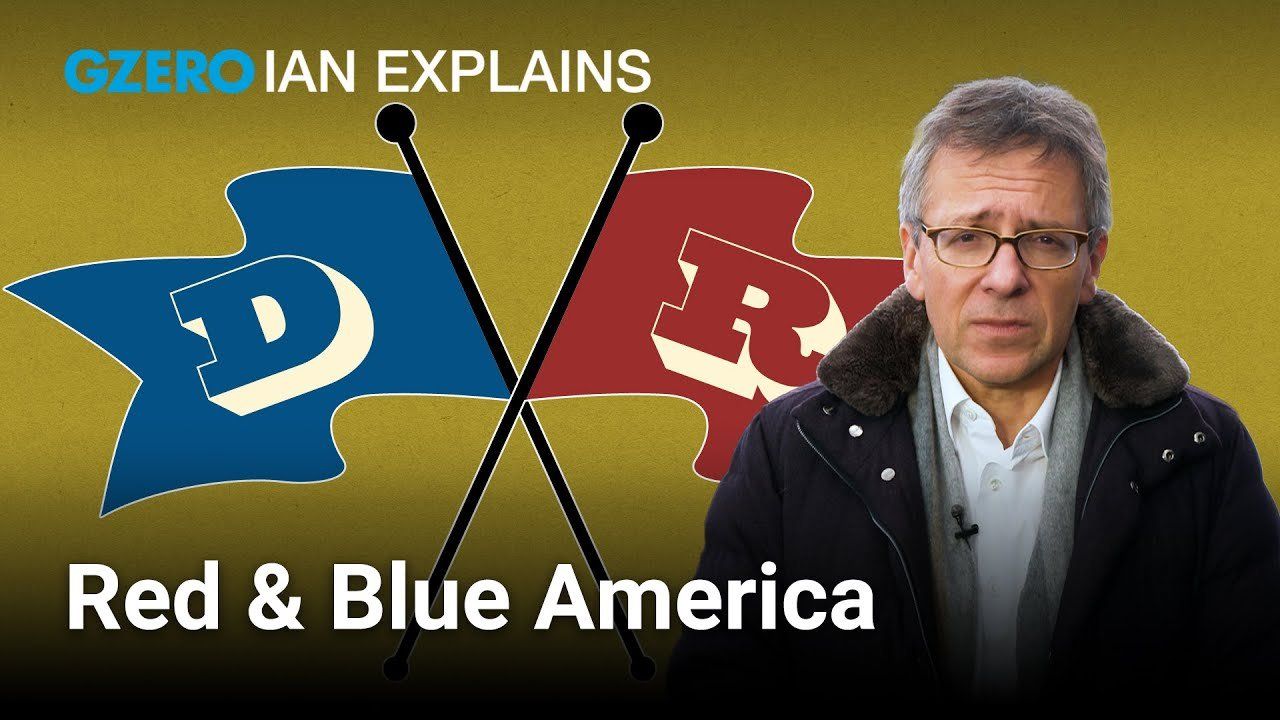Ian Explains
Ian Explains: How the US turned red and blue

Ian Explains: How the US turned red and blue | GZERO World with Ian Bremmer

Do you live in a red state or a blue state? Until fairly recently, such a question would have been nonsensical in the US. Ian Bremmer rolls back the clock on GZERO World to take a look.
On November 4, 1980, NBC News became the first major network to call the presidential election for Ronald Reagan. What stands out about this clip is not the absolute drubbing that President Carter received, but those colors on that map. States that had gone for Reagan are blue, states yet to be decided are that sickly 1980s yellow, and lonely little Georgia, which native son Jimmy Carter had managed to hold on to, is red.
It wasn’t, in fact, until the contested 2000 election between then Vice President Al Gore and Texas Governor George W Bush that major news networks agreed on a standard red-state-Republican // blue state-Democrat map scheme. That’s right, one of the most iconic signifiers of Republican or Democrat identity—second only to the elephant and donkey—is a modern invention, and one borne out of confusion.
Al Gore’s legacy will forever be tied to his fateful decision to put the peaceful transfer of power over his personal ambitions. He was also acknowledging a shared reality, as unpalatable as it might have been for himself, where George W Bush would be the next president of Red and Blue states, alike.
Global conflict was at a record high in 2025, will 2026 be more peaceful? Ian Bremmer talks with CNN’s Clarissa Ward and Comfort Ero of the International Crisis Group on the GZERO World Podcast.
Think you know what's going on around the world? Here's your chance to prove it.
Indian Prime Minister Narendra Modi isn’t necessarily known as the greatest friend of Muslim people, yet his own government is now seeking to build bridges with Afghanistan’s Islamist leaders, the Taliban.
The European Union just pulled off something that, a year ago, seemed politically impossible: it froze $247 billion in Russian central bank assets indefinitely, stripping the Kremlin of one of its most reliable pressure points.